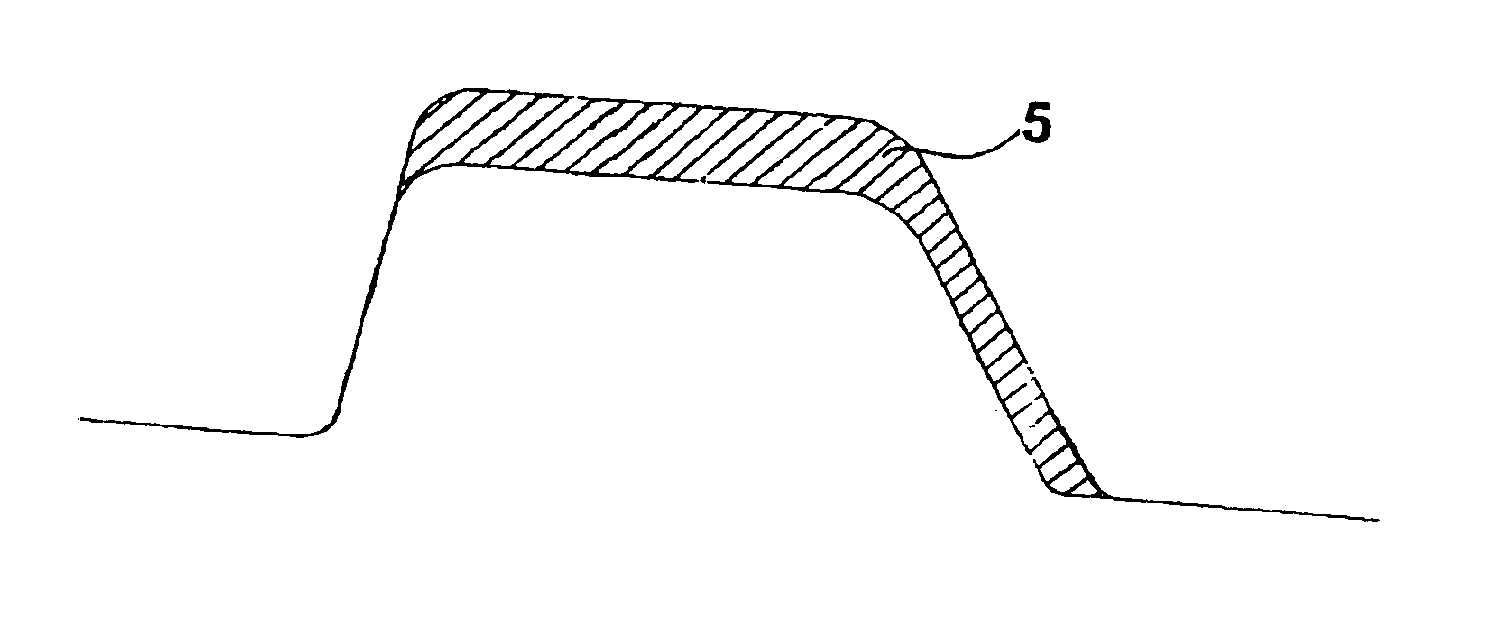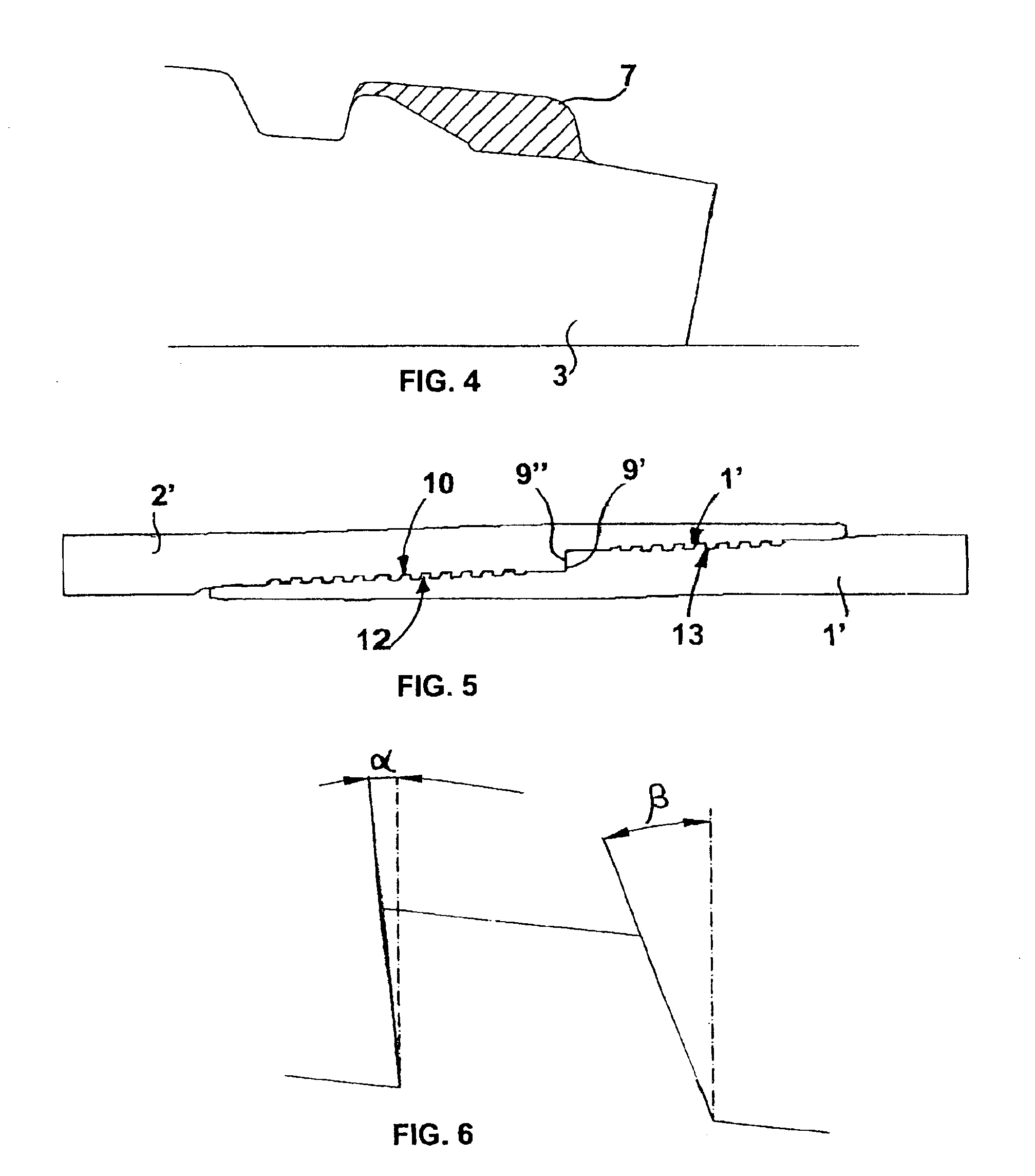Threaded joint for tubes
a technology of threaded joints and tubes, applied in the direction of flexible pipes, rigid pipes, pipe supports, etc., can solve the problems of galling, not enabling the high contact pressure generated, heavy metals are dangerous for health and the environment,
- Summary
- Abstract
- Description
- Claims
- Application Information
AI Technical Summary
Benefits of technology
Problems solved by technology
Method used
Image
Examples
Embodiment Construction
[0037]Illustrated in FIG. 1 is a joint comprising a male member or pin 1 with external thread 3 and a female member or box 2 with internal thread 4.
[0038]After accurate studies aimed at obtaining optimization in the sizing of the joints, it has proven possible to define mathematical relations between various parameters of the tubes.
[0039]We shall consider a thickness of coating of the dry lubricant of between 5 μm and 30 μm.
[0040]The area gT of the free space between the threads engaged in the section of the joint considered on an axial plane is less than 0.4 mm2 / pitch.
gT≦0.4 mm2 / pitch
[0041]Said empty area gT, designated by the reference number 5, is represented in FIG. 2. It may be calculated, for example, with the aid of a CAD, or else considering the area 6 in the idealized form, as represented in FIG. 3.
[0042]If we consider a thread with 4 TPI and a tooth height of 1.5 mm, the area filled by a coating of 30 μm of thickness is approximately 0.3 mm2. Consequently, in order to prev...
PUM
 Login to View More
Login to View More Abstract
Description
Claims
Application Information
 Login to View More
Login to View More - R&D
- Intellectual Property
- Life Sciences
- Materials
- Tech Scout
- Unparalleled Data Quality
- Higher Quality Content
- 60% Fewer Hallucinations
Browse by: Latest US Patents, China's latest patents, Technical Efficacy Thesaurus, Application Domain, Technology Topic, Popular Technical Reports.
© 2025 PatSnap. All rights reserved.Legal|Privacy policy|Modern Slavery Act Transparency Statement|Sitemap|About US| Contact US: help@patsnap.com



